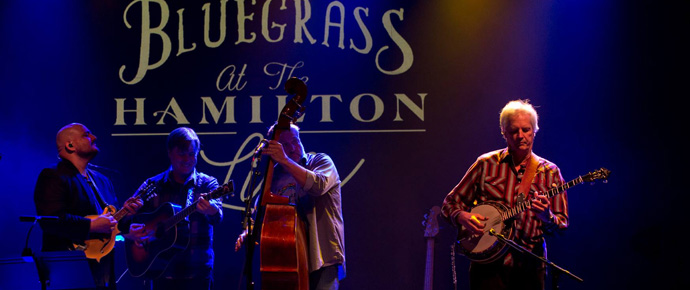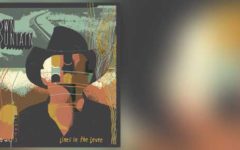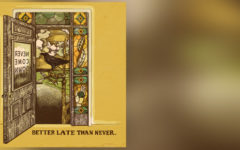
The other night, I had the chance to attend a concert by Frank Solivan and Dirty Kitchen with a few friends 40 and younger. One was new to bluegrass, one a recent convert from a long dormant classical career, and the other a 15-year-old girl who plays bluegrass at every opportunity, on both fiddle and mandolin, just like Frank.
It occurred to me that I was getting a glimpse of the future of bluegrass, not only from the band but also from my friends. And I was pleased by what I heard and saw. Long after I’m gone, these friends will be playing and listening, preaching the gospel of bluegrass to newer generations.
I know what some of you are thinking: That wasn’t bluegrass the way Bill Monroe, Lester and Earl or Ralph and Carter intended it to be. Those of you firmly in the traditionalist WWBD camp – What Would Bill Do? – are entitled to that opinion, and you are an important part of keeping the music of the founding fathers in our minds and on the radio.
My mileage, though, varies. I’m grateful to those first generation bluegrassers and I’m quick to point newer fans back to them at every opportunity. Love how Dirty Kitchen handled Dark Hollow? Track down a Monroe performance of that song. Love Mike Munford’s mastery of the banjo? Check out Earl Scruggs. There’s more than one way to play a banjo, but the three-finger rolls he perfected are still the backbone of bluegrass, at least to me. Love bluegrass vocal stylings? Check out Carter Stanley, for my money the best original voice in the genre I love.
But I embrace an expanded definition of bluegrass, and I believe it will help the music thrive going forward. I welcome experimentation. Not every experiment works, but if you don’t try, you’ll never know. If you don’t fail, you’ll never grow.
And I don’t buy the argument that bluegrass isn’t bluegrass if the music strays from the way the founders played it. The truth is, we don’t know what Bill Monroe would be playing if he were still with us.
Everything around us evolves, so why shouldn’t bluegrass? Most horse owners eventually embraced the automobile. Basketball purists saw the two-hand set shot give way to jump shots and dunks. So what is so sacrosanct about bluegrass?
Some argue that the loosening of bluegrass “rules” to allow non-traditional bands on stage is killing festivals by driving fans away. I think bluegrass festivals are like restaurants. A steakhouse is a great choice for meat eaters. But if people in your party don’t eat meat or prefer a variety of options, there are better choices.
So here’s where I come down. By all means, honor the fathers. We wouldn’t be here without them. But be willing to embrace change. You don’t have to like drums, but when solid traditionalists such as Doyle Lawson and Joe Mullins are willing to experiment with percussion, it seems likely that we’ll hear more and more bands going in that direction.
In fact, I think bluegrass is at a tipping point. In a generation, maybe sooner, I expect drums to be as prevalent in bluegrass as the Dobro. The key question when I listen and write a review for Bluegrass Today isn’t should there be drums. It’s does the percussion add to the music or does it detract? If it’s in the way, it doesn’t belong there, simple as that.
Don’t like jam bands or newgrass? No one will make you listen if you don’t want to. But those who don’t will miss out on the virtuosity and genius of the Infamous String Dusters, Sam Bush and, yes, Frank Solivan and Dirty Kitchen.
One of my favorite moments at IBMA’s World of Bluegrass came some years back at a celebration of Bill Monroe’s 100th birthday. Sam Bush, during his presentation, turned his back to the audience and stared at a huge photo of the father of bluegrass on the screen behind him. To me, it was the ultimate tribute.
Later, Bush played the fire out of the mandolin. Some people probably imagined Bill rolling over in his grave. I like to think that Bill was smiling down on Sam. After all, all parents want their children to do better than they did.
So rather than refight old battles about the size of the tent or what is and isn’t bluegrass, let’s agree to disagree and be happy with our individual choices. I’ll continue to visit both restaurants. I’ll happily listen to Carter Stanley and Danny Paisley and eagerly wait for Frank Solivan’s new CD later this year. The taste I had at Saturday’s show left me wanting more.
You don’t have to like it, but I urge you to at least take a bite before you make up your mind. Here’s what I’d suggest. Listen, when it’s out, to Mike Munford’s fantastic instrumental, Crack of Noon. To me, it’s proof that Solivan, Munford, Chris Luquette and Jeremy Middleton are the best instrumental unit in bluegrass these days.
Or dig back through Solivan’s records or hop online and find the band’s rendition of I’ll Go Steppin’ Too or Runaway Ramp. You’ll hear bluegrass through and through.
If you don’t like it, at least you tried. Not everybody likes ice cream, either. And that’s OK. Bluegrass shouldn’t be an all or nothing proposition. Here is the only thing that should matter: Is the music good?







